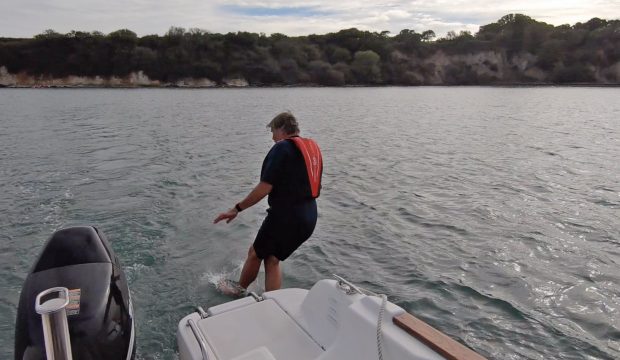Find out where relevant companies and associations stand on the issue of kill cord safety
Williams Performance Tenders
Do you think the current design of kill cord could be improved upon and why?
The current design of kill cord is effective at doing what it is intended to do, provided it is used correctly. It is the most basic, thus the most reliable way of interrupting an engine’s ignition using a mechanical switch physically linked to the helmsman via a tether. Problems only arise when they are not used as intended. You may apply modern technology to carry out the same function, but the current systems marketed are in no way foolproof. Furthermore, many of these systems are far less conspicuous than a brightly coloured tether next to the steering wheel making them more prone to being ignored which is probably the biggest fundamental problem to begin with.
Which of the six readers’ suggestions do you favour?
Better training would go a long way to help educate boaters of the importance of using a lanyard kill switch especially in smaller, open boats. There are very few owners of high-powered motorbikes that would consider riding without appropriate protective clothing. Apart from a crash helmet, it is not a legal requirement to wear such clothing and much of the time it is somewhat of an inconvenience, but if you have a tumble without wearing it the consequences will be far more severe. The message needs to be drummed home stronger and louder.
Would you consider using one of these systems on your engines/boats?
Lanyard kill cords are fitted to all our boats in the event a helmsman should become detached from the craft. In addition to this, all the craft we manufacture at Williams use water-jet propulsion, a conscious decision made when we first entered the yacht tender market. There are no exposed props or moving parts protruding beneath the hull which are effectively smooth from bow to stern making them inherently safer for people in the water. We have experimented with sprung-throttle controls and concluded they were better suited to all-or-nothing throttle settings but proved difficult to attain good control at intermediate speeds on lumpy water. We have yet to test any of the wireless devices which claim to offer improvements over the conventional kill cord. Such a critical safety device must be extremely robust and able to withstand the harshness of the marine environment.
Do you think customers would be prepared to pay more for a safer, more user-friendly solution?
I believe ultimately this decision comes down to individual preference, but the ability of the electronic or wireless kill cord to offer value-added features such as remote start/stop, immobiliser or even interface with other electronic devices on board the mothership or on land would undoubtedly sway a certain number of boaters. User friendly is one thing, but whether or not these new systems are any more effective than the current industry standard kill switch is arguable.
How would you like to see things develop from here?
If there were a solution which could not be fiddled or ignored and was 100% reliable it would be an obvious fitment across the board for all manufacturers. We will certainly see more variations of the electronic type kill switch appear on the market and the cost of these will likely reduce over time. I do not think they are any substitute for the awareness of why these basic safety devices exist in the first place.









